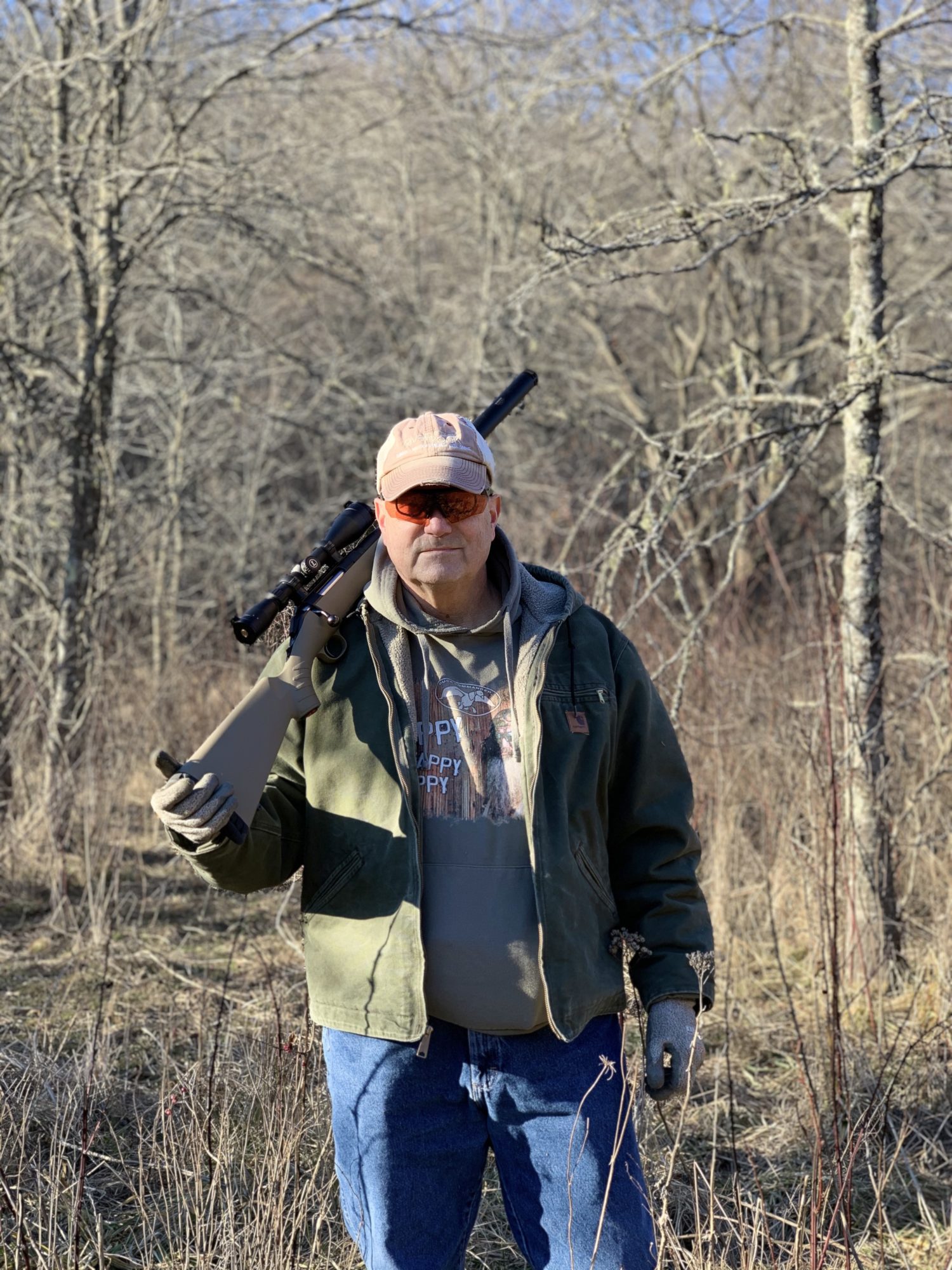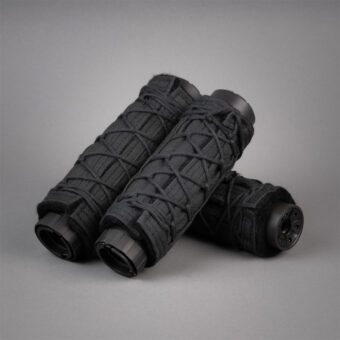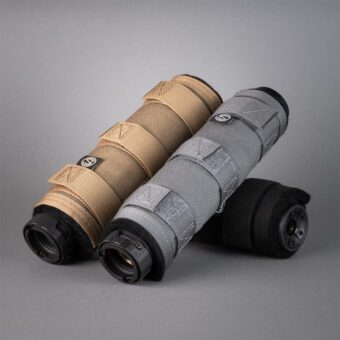Home / All About Silencers / Hunting Hoover Hogs with the Harvester
Home / All About Silencers / Hunting Hoover Hogs with the Harvester
Hunting Hoover Hogs with the Harvester
Jason Baird
In his home state of Missouri, Dr. Bomb practices predator control of nine-banded armadillos, aka Hoover Hogs, with the SilencerCo Harvester 300.
Hunting Hoover Hogs
The second definition of “pest” in the online version of the Merriam-Webster dictionary is “something resembling a pest in destructiveness; especially a plant or animal detrimental to humans or human concerns (such as agriculture or livestock production).” I would add a subcategory to this and add the words “mouse, rat, armadillo.” Apparently, the nine-banded armadillo is the only one found in the US, and is one of several state animals of Texas. Texas is so well-known as a source of armadillos, that we used to call them “Texas speedbumps.”
Unfortunately, Texans didn’t keep the Hoover hogs to themselves, and the little buggers have become pests in my home state of Missouri. That term “Hoover hog” sprang from the Great Depression of the 1930’s, and referred to poor people having to eat armadillos because of President Hoover’s supposed inept handling of the economy. The ’dillos are omnivores, mainly eating bugs, but also consuming acorns, small birds, eggs, lizards and anything else they can dig-up or catch. They also carry the bacterium that causes leprosy, so don’t handle the animals (alive or dead).
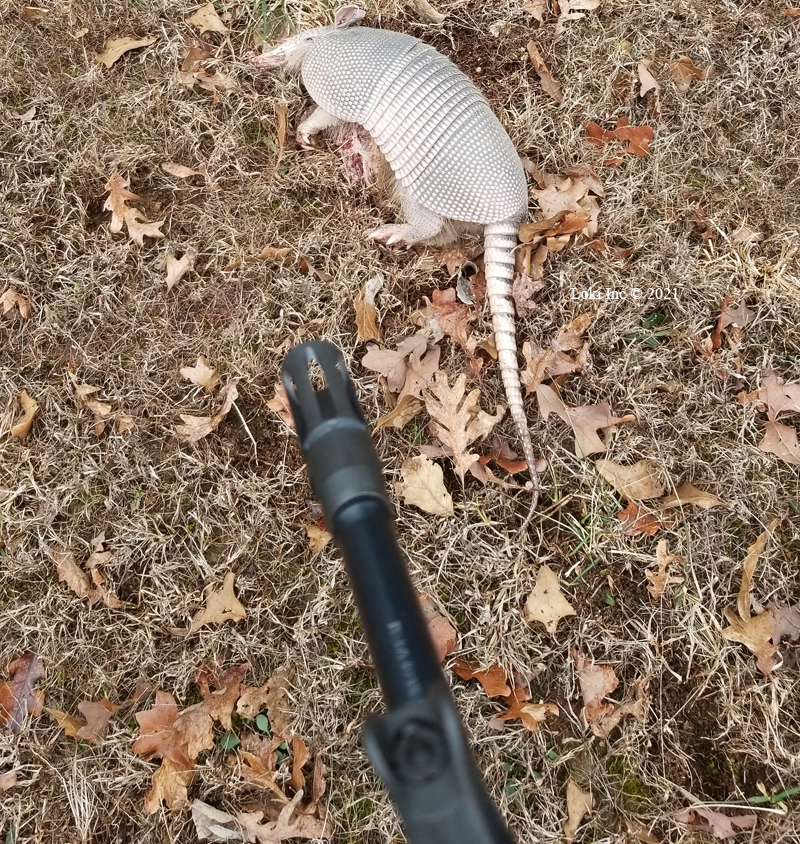
According to the National Wildlife Federation (NWF), the nine-banded armadillo has been expanding northward from their historic range in southern North America for more than a hundred years. The NWF also claims that anthropogenic global warming is the driver behind this movement. The armadillo’s natural predators are apex predators such as mountain lions, black bears and alligators. As it happens, we have a few black bears around, but nowhere nearly enough to keep the Hoover hogs in check. Therefore, they are an invasive species in my area that is destructive to native wildlife and that competes with native fauna for food.
That hundred-year trek may be so, but when I was a teenager in the Missouri Ozarks, there were no armadillos to be seen anywhere in the area (no bears or large predator cats, either, so they weren’t eating ’dillos around here). Now, it is unusual not to see one rooting around through the woods, pastures and glades – practically every time I venture out on my property.
The ’dillos moved into this region quickly; as such, native animals have not adjusted to their presence, giving the interlopers free rein to spread their destruction across the hills and hollers. As far as the Missouri Department of Conservation is concerned, armadillos are a “Nuisance & Problem Species” that can be shot to prevent further damage to property; my local conservation agent says we can use whatever gun is at hand to do the shooting.
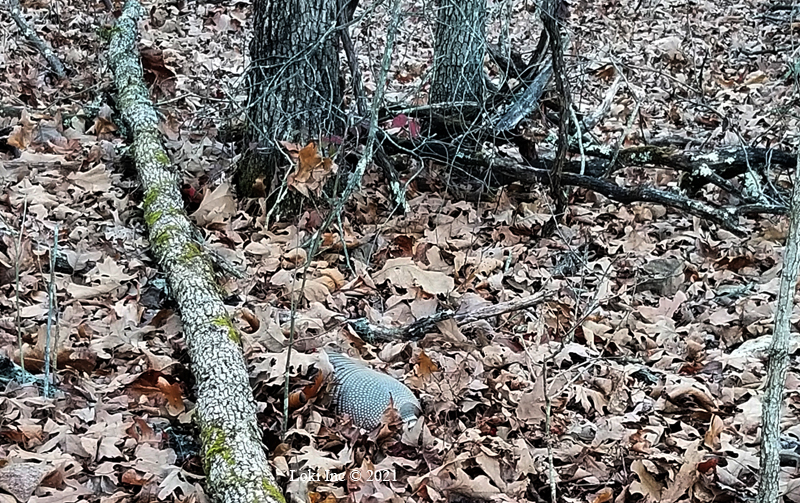
Advantages to Hunting Armadillos
What’s one good thing about the pesty Hoover hogs? They are challenging prey for the apex predator – us. Contrary to wisdom that says ’dillos are nocturnal and normally only active early in the morning or late in the evening, I’ve seen them at all times of day. One of my best training activities for the past year or so has been to draw down on the buggers when I come across them tearing-up the woods and grasslands. My S&W M&P R8 8-shot .357 mag is my usual sidearm and has been a good tool for this task. I have used my S&W M&P-15 5.56 carbine when I’ve had it out in the woods with me. But, when my better half is with me and lets me put her Harvester 300 suppressor on my Ruger American Ranch Rifle in 300 AAC Blackout, I prefer it because it gives me training in snap-shooting targets with a long gun offhand (i.e., from a standing position without a rest) — and my ears don’t ring afterwards, or I don’t have to stop to put in ear plugs!
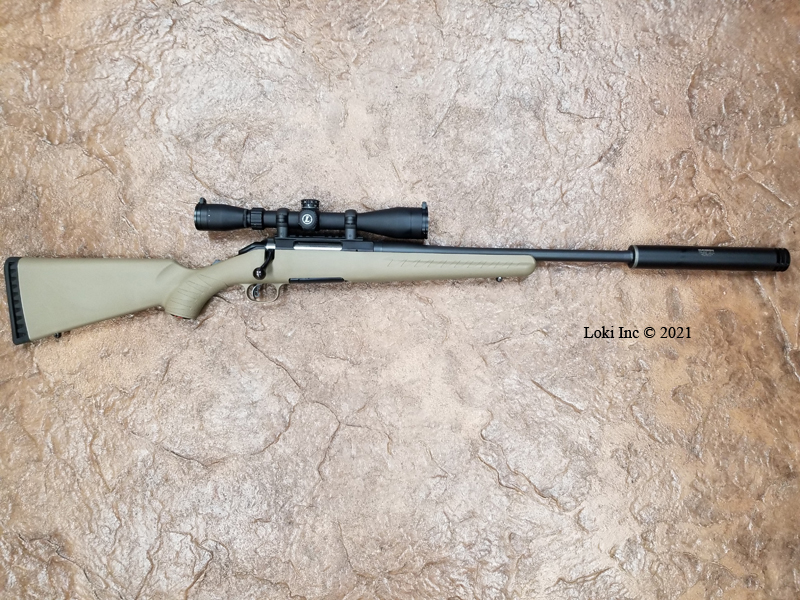
In addition to snap-shooting, offhand shooting training and preparation for big-game hunting, this sort of shooting activity sharpens other hunting and tracking skills. I’m convinced the best way to pursue armadillos around here is to slowly walk through the woods, glades or grasslands while watching for armadillo spoor and listening for the characteristic shuffling noises they make while rooting. Once in a while, you see movement that reveals the Hoover hog’s location, but they so closely resemble the grey dolomite rocks so abundant around here that using sight, by itself, is not a good way to spot the animals. I usually hear them before I see them – another good reason to use a suppressed firearm, because having hearing deadened by recent shots impedes one’s ability to hear the faint shuffling ’dillo noises in the leaves or grass.
Spot the Hoover Hogs
Imagine you are walking through an Ozark highlands hardwood forest, trying to be quiet and observant. Looking down, you see where the leaves have been disturbed by something poking around, looking for who knows what. Was it a solitary turkey looking for a snack? No, it is a small disturbance, there are no turkey droppings and the trail carries on continuously for quite a distance.
How about a squirrel, digging for nuts it buried last fall? Probably not, as the trail is more linear than the mostly random digging of a squirrel. You stand still, scanning the forest floor, trying to observe each leaf, stick and rock, and listening intently for any noise different from the background forest noises. First, you hear it, and then you see the Hoover hog.
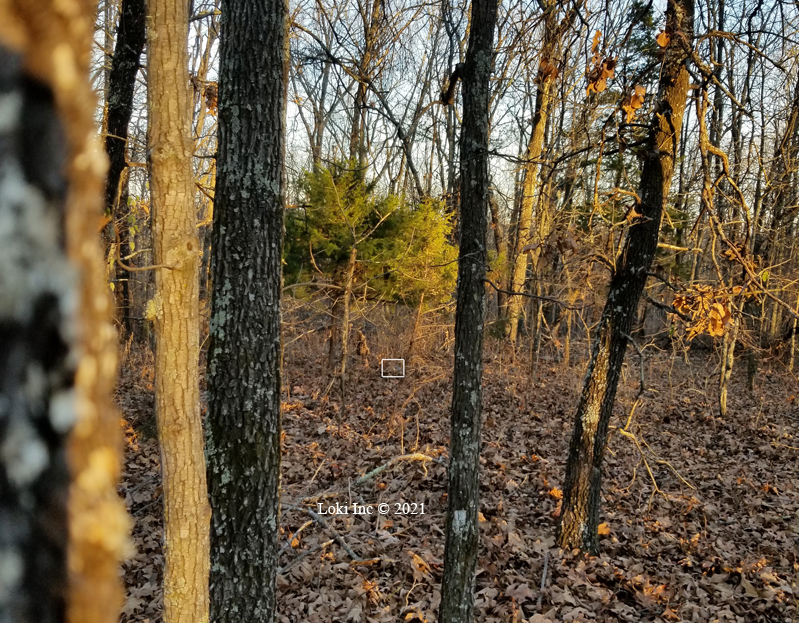
Or not – what was that movement?
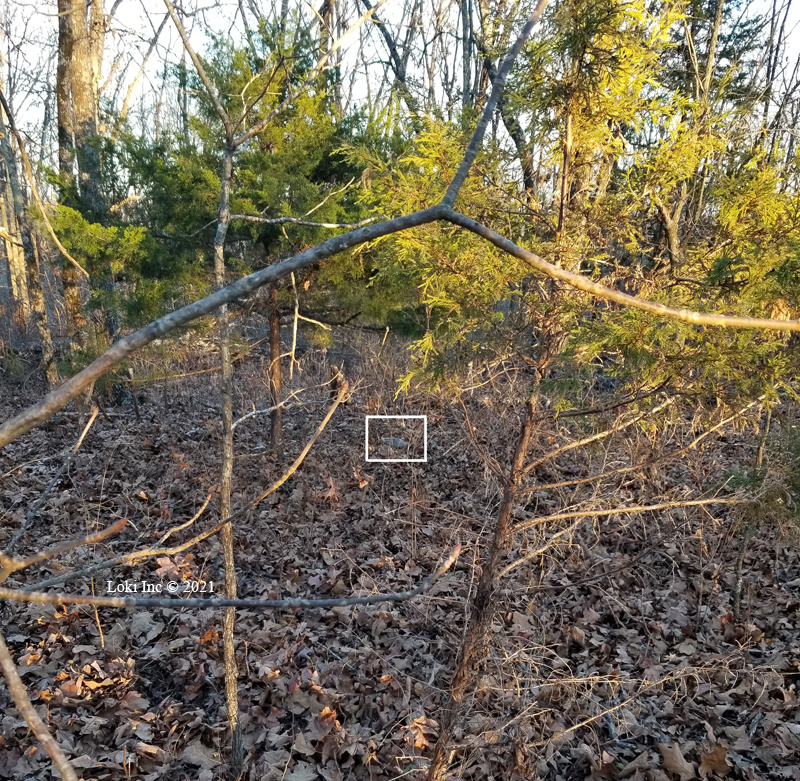
Yes, there he is!
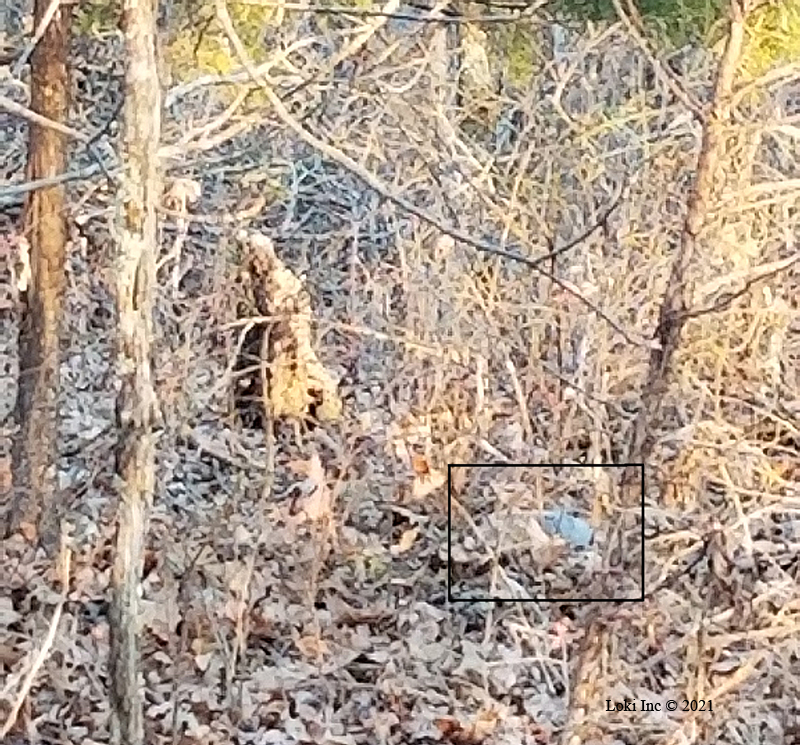
But, be careful! A ’dillo’s eyesight is weak, but I know from experience they are very good at spotting movement.
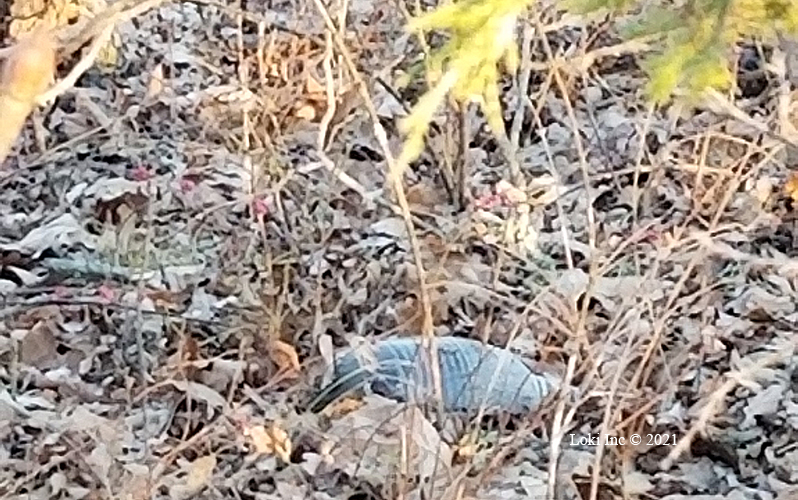
In addition, if you take your eye off the animal, you may not be able to find it unless it helps you by moving. One of its self-preservation methods is to bury itself in the leaves or under a deadfall or stump, and a ’dillo does it in the wink of an eye when alerted to your presence.
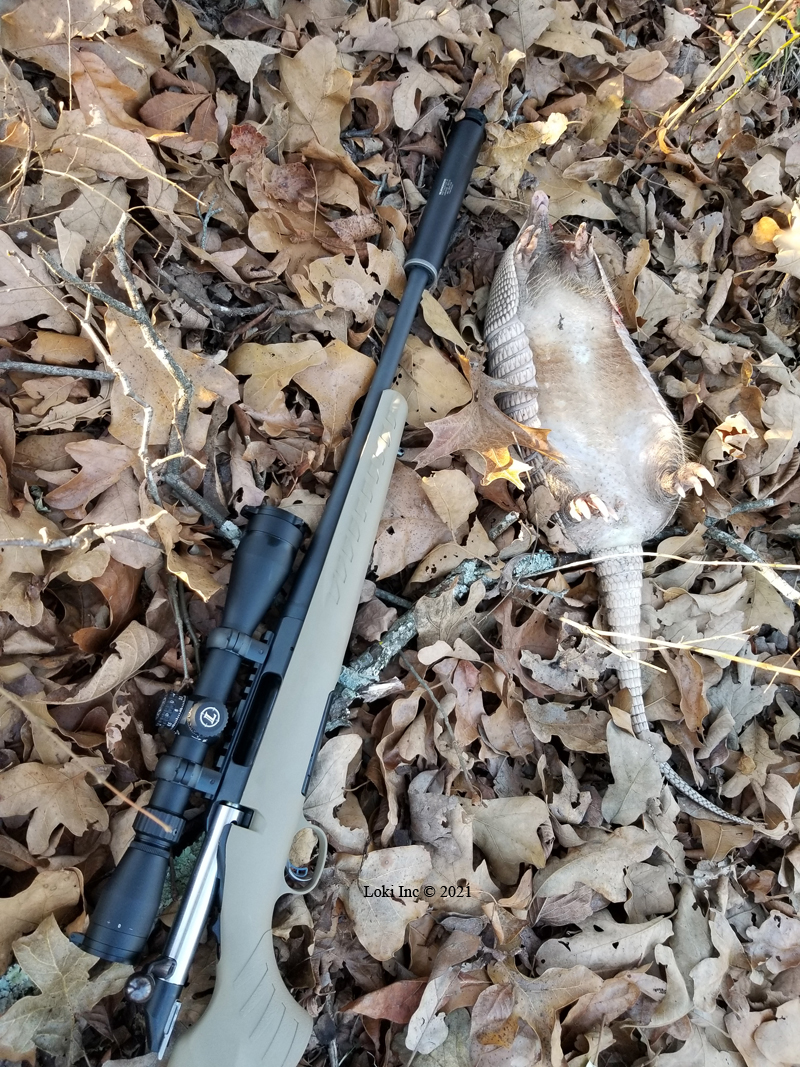
Sometimes, when alerted, a ’dillo will run surprisingly quickly – here’s your chance to perfect your running target shooting skill using a scoped centerfire rifle (of course, always being aware of your muzzle direction and what is behind the moving target, just like with big game hunting). If these considerations aren’t enough, realize that the bullet path between you and the target has sticks, brush, grass tops, etc. along the way. There is no such thing as a bullet that won’t be deflected when it hits something on its way to the target.
